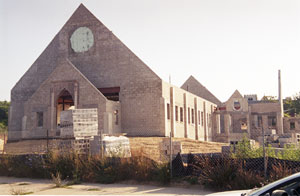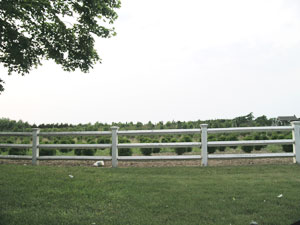Too Many at the Bar - Fire marshal warns restaurateurs to trim back
Too Many at the Bar - Fire marshal warns restaurateurs to trim back
No merchant wants to turn away paying customers, but that's what they had to do with some 500 carloads of them in Montauk 50 years ago on July Fourth weekend, when every "nook and cranny" of overnight accommodation was spoken for.
On July Fourth weekend this year, one Montauk restaurateur was forced to close his door to prospective patrons on one of his busiest nights ever. As an East Hampton Town fire marshal pointed out to him on July 3, the place was simply too full.
According to David DiSunno, the chief fire marshal, his office has made 256 inspections of bars and restaurants since Memorial Day. In the summer season, Mr. DiSunno said, his staff makes late-night inspections of bars and restaurants from Wainscott to Montauk every weekend.
"We're focused on life safety," he explained. "After what happened in Rhode Island, tensions rose."
He was referring to a fire in a nightclub that killed 96 people in West Warwick in 2003. Afterward, he said, he received letters from Gov. George E. Pataki's office and from Bill McGintee, the town supervisor, asking him to "step up enforcement."
"We try to keep a lid on it," he said of overcrowding, but the problem "comes and goes." It was, he said, a "major problem in the late '70s and early '80s. Now it's back again."
So, on July Fourth weekend, Tom Baker, a town fire marshal, headed east to check on the nightspots in Montauk that sometimes draw crowds well over what they can lawfully - and sometimes physically - fit. Shortly after midnight, he closed down Oyster Pond, a restaurant and bar just south of Montauk Highway in Montauk, because it had exceeded its 99-person capacity.
Paul Graves, an owner of the restaurant, asked Mr. Baker if he could cut the number back and stay open.
"He said no, shut it down," Mr. Graves said on Tuesday. He figured his business was off about 20 percent that night as a result.
Although his doorman counts heads at the restaurant's entrance, Mr. Graves said, he may sometimes indeed exceed the legal occupancy. "It tops out at around 105," he said.
The fire marshal had also visited Oyster Pond in June, issuing a citation for overcrowding. A hearing on that citation, which was scheduled for Monday in East Hampton Town court, was postponed.
The minimum fine for fire code violations is $250, and the maximum is $1,000 for each day a business operates in violation. After the department writes up a citation, the inspector will usually offer advice on how to keep the crowd smaller or how to safely accommodate a larger one, Mr. DiSunno said.
"They have been helpful," Mr. Graves said. At the fire marshal's suggestion, he said, he might add an emergency exit and remove some interior doors, and he is negotiating with a company to put in a fire suppression system.
Until then he has the task of keeping some people out of the bar. "There have been some uncomfortable moments as an owner," he said, "having to tell people who come here regularly they can't come in."
The Point Bar and Grill, also in Montauk, was fined $1,000 on June 27, also for having more customers inside than the fire code allowed.
Just across the street is another bar, the Memory Motel. The owner, Arthur Schneider, said had not been cited since he installed a sprinkler system when renovating the place last year. The fire code requires a fire suppression system for businesses with occupancy capacities over 100. Mr. Schneider can legally admit over 130 people.
"It's a safer environment for customers," he said, adding that, although initial cost of the sprinklers may be high, an insurance reduction "pays for the expense of the system in two and a half years."
Mr. DiSunno said there were three or four cases of overcrowding pending in the civil court system. If many seem to occur in Montauk, he said, it may be simply because there are so many bars and restaurants there.
In the winter months, Mr. DiSunno said, his department will only go to an establishment if there is a complaint. "It's a seasonal community, so we have a seasonal system," he said, adding that there are usually not enough patrons in bars during those months to fill them up.
But "I get complaints all the time" from residents and directly from the supervisor's office, he said.
Fire code violations can range from having highly flammable interiors to having blocked exits or not having a fire-suppression system, not to mention too many people.
Clearly, some bars with substantially lower capacities are still packing customers in, sometimes without the benefit of fire-extinguishing systems.
"In July and August, there are going to be more people coming into your business," said Mr. Graves, the Oyster Pond owner. "Everybody deals with it in one way or another. I don't think I'm alone."
Mr. DiSunno said he did not recall there being any fires at over-crowded bars in East Hampton Town - "not yet."
"Most people just don't think fire or tragedy can happen to them, but it can," he said.
"The most important thing is to never jeopardize anyone's safety," Mr. Graves said.


